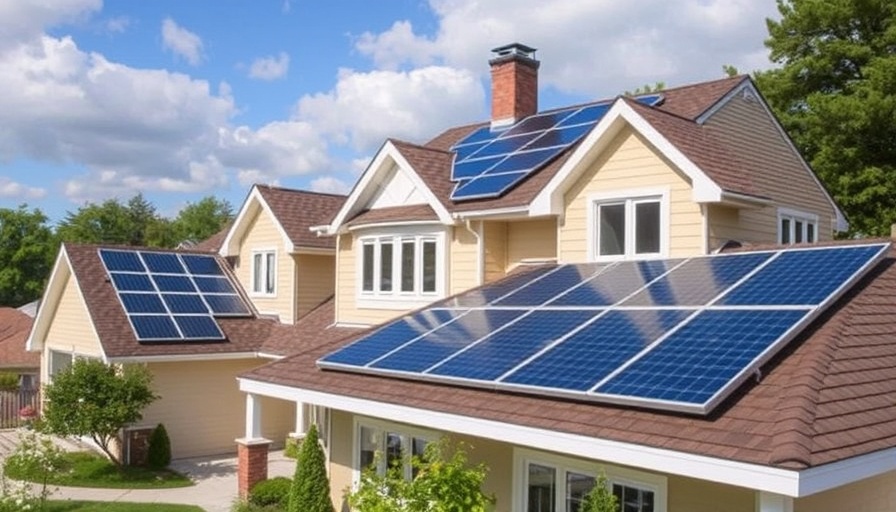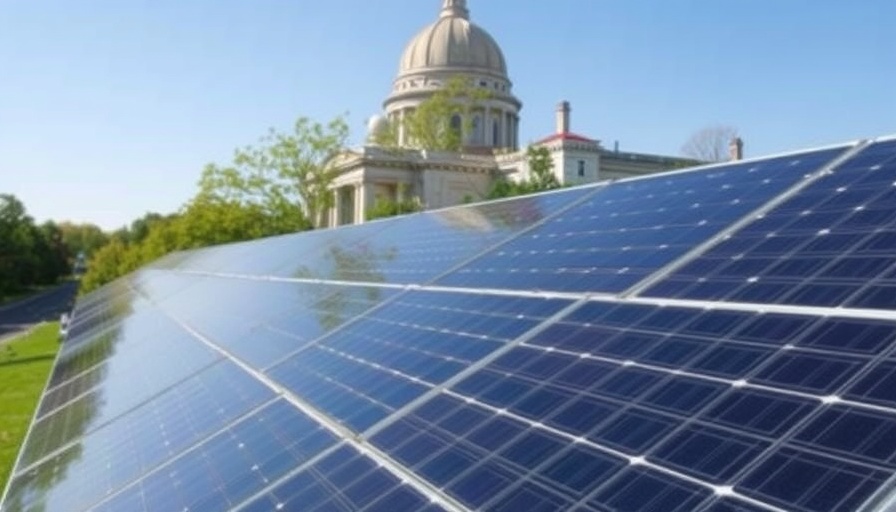
Residential Solar Energy: A Decline in 2024 and What's Next
The residential solar market has faced a significant downturn in 2024, with a staggering 31% decrease in installations across the United States. This decline follows several years of growth, leading to concerns among homeowners and eco-conscious consumers about the viability of solar energy as a sustainable solution for reducing energy costs and enhancing home values.
Unpacking the Factors Behind the Decline
Multiple factors contributed to this decline in the residential solar market. Firstly, fluctuating interest rates and policy changes played a crucial role. According to a McKinsey report, interest rates tripled from 2021 to 2023, leading to heightened financing costs that deterred potential solar buyers. Additionally, the expiration of lucrative state incentives, like California's net energy metering (NEM) policy, further exacerbated the downturn.
The Impact of Legislative Changes
While the passage of the Inflation Reduction Act (IRA) in 2022 created hopes for long-term growth in residential solar installations, its effects manifested slower than expected. As noted in a Wood Mackenzie analysis, loan financing faced challenges with rising interest rates, resulting in reduced consumer demand and a shift in the market dynamics. Installations in California specifically dropped sharply, predicting a 40% decrease due to changing incentives.
A Market Reset: What It Means for Homeowners
This market reset is not synonymous with failure. Experts believe that while 2024 poses challenges, it also offers opportunities for recovery and growth in the coming years. Companies that successfully adapt their strategies can position themselves for the next wave of demand as the market stabilizes. As noted by McKinsey analysts, although residential solar installations are currently down, the market's fundamentals suggest potential for steady growth in the future.
Consumer Demand Remains High
Despite recent setbacks, consumer interest in residential solar remains robust. Surveys conducted show a significant percentage of homeowners are still considering solar power installation as a beneficial investment. In fact, the allure of lower energy costs and increased property value drives many consumers to explore solar options further.
Looking Forward: The Future of Residential Solar
Industry analysis indicates that while 2024 may be challenging, it could also set the stage for a rebound. With improved consumer education, market innovations, and smoother financing options, residential solar is poised for a comeback. Companies should focus on streamlining processes, reducing customer acquisition costs, and innovating their service offerings to adapt to this shifting landscape.
Key Strategies for Industry Players
As the market continues to evolve, successful solar companies will likely differentiate themselves through:
- Integrating Digital Tools: Utilizing technology and artificial intelligence to streamline operations will be crucial to maintaining competitive pricing and improving customer experiences.
- Expanding Product Offerings: Introducing complementary products such as battery storage and smart home technology can attract more customers and enhance value.
- Localized Agility: Adapting business models to local market conditions will enable companies to respond swiftly to changes and capture emerging opportunities.
The future of residential solar does not hinge solely on the ups and downs of annual installations but rather on long-term strategies that meet evolving consumer needs and market demands.
Call to Action: Reconsider Solar Energy in Your Energy Plans
If you're a homeowner or business owner considering solar energy, now is the time to engage with professionals who can guide you through the current market landscape. Explore the sustainable options available and invest in your energy future to take advantage of any upcoming incentives and technological advancements that make solar an increasingly viable choice.
 Add Row
Add Row  Add
Add 



 Add Row
Add Row  Add
Add 
Write A Comment